Adrian Collins's Blog, page 154
October 18, 2021
An interview with Soman Chainani
Soman Chainani is a bit of an unusual guest for Grimdark Magazine. He is mainly known for the series The School for Good and Evil, a long-running middle grade fantasy series, which has sold more than 3 million copies, been translated into 30 languages across 6 continents, and will be a major motion picture from Netflix in 2022. He is now back with Beasts & Beauty, a highly illustrated collection of dark fairy tales and we had the opportunity to talk to him about retellings, fairy tales and his new book.
[GdM] What inspired you to write a collection of re-written fairy tales?
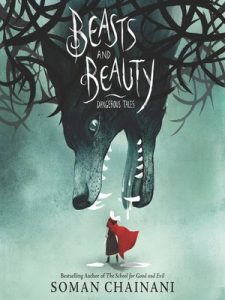 [SC] The School for Good was my attempt to reclaim fairy tales from Disney by presenting a fantasy school where students learned more nuanced interpretations of Good and Evil. It was a bit like Harry Potter if the Slytherins were as capable – and much more sexy and charming – than the Gryffindors. So, when I was done with that series, six books in ten years, I was ready for a kind of primal unleashing. I found myself going back to the original tales and wishing that I could just redo them from scratch, because the old fairy tales seemed so dead and irrelevant at this point. It was a lofty ambition but being cooped up during a pandemic makes you lose all self-consciousness and fear and just swing for the fences.
[SC] The School for Good was my attempt to reclaim fairy tales from Disney by presenting a fantasy school where students learned more nuanced interpretations of Good and Evil. It was a bit like Harry Potter if the Slytherins were as capable – and much more sexy and charming – than the Gryffindors. So, when I was done with that series, six books in ten years, I was ready for a kind of primal unleashing. I found myself going back to the original tales and wishing that I could just redo them from scratch, because the old fairy tales seemed so dead and irrelevant at this point. It was a lofty ambition but being cooped up during a pandemic makes you lose all self-consciousness and fear and just swing for the fences.
[GdM] What was the biggest challenge writing in short form after writing a long-running series?
[SC] A short story is much harder to execute than a novel. It’s the equivalent of the short program in figure skating where you cannot make a mistake – whereas in the free skate or longer program, if you fall once or twice, you can find ways to make it up elsewhere. So, with a short form fairy tale, you have to be so controlled and precise and focused, because any error in the chain will be glaring and disrupt the reader. The vision has to be so pure and directed.
[GdM] What was your favourite version of a fairy tale that you encountered while researching for this book?
[SC] The original Sleeping Beauty story is so wild and intense, featuring a princess who wakes up pregnant, unsure who the father is, the setup for a tale that evolves into cannibalism and child murder. I knew when I did my Sleeping Beauty I wanted to bring that feeling of darkness and feeding and terror back to the tale, which is why I start with a prince who wakes up every morning sucked of blood.
[GdM] Have these stories always been a presence in your life?
[SC] We didn’t have cable or internet or video games when I was young, so all we had was our rickety TV set and VHS tapes of every single Disney animated movie (my parents figured Disney was an appropriate surrogate parent to my two brothers and I). Until age 8 or so, those movies were all I watched. Everything I learned about storytelling, I learned from Disney. When I went to college and took a class about fairy tales, though, I became fascinated by the gap between the original tales and the Disney revisions I had grown up with. Somewhere in that gap, The School for Good and Evil was born.
[GdM] How do you balance writing for your audience, which is mostly younger readers, with the tendency to return your tales to their darker, less sanitised roots?
[SC] I don’t think too much about the age of the audience. I just think about an audience of all ages, gathered around a campfire, listening to a story. You have to entertain at a primal level, the way the old fairy tales did, whether someone is 8 or 88. There’s a way to tell a satisfying story that resonates on different levels for all ages. It’s what the original storytellers did. It’s difficult, of course. Nearly impossible. But that’s what I’m trying to do.
[GdM] How did the looming Disney interpretations impact you while reworking these beloved stories into your own versions?
[SC] The Disney versions tend to get the fairy tales all wrong and create this impression that Good always wins, when they most certainly don’t in the original tales. Take the Little Mermaid, for instance. In the Hans Christian Andersen version, she’s clearly the villain of the tale – a disobedient, shallow, traitorous girl who the sea witch makes a fool of and the mermaid essentially dies as punishment. Disney somehow turns her into the heroine of the story, even though all the seeds of her villainy are still there. I’m more interested in the gap between Disney and Grimm’s and the original tales than working with any of the Disney tropes. My hope is to help children reclaim their fairy tales from Disney.
[GdM] How did you choose which tales to include in your collection, which stories you wanted to reimagine?
[SC] There was no conscious choosing, really. Each time I finished a story, the next one came to me. I tend to write from an unconscious place, so I let the stories guide me. Every time I finished a tale, the next one seemed to appear out of the ethers, with a fully formed beginning, middle and end.
[GdM] What have you been reading or watching recently that you’d like to shout out to our readers?
[SC] Ted Chiang’s short stories are the secret to understanding life. Exhalation and Stories of Our Life are the two collections. Required reading for every human.
Read Beasts & Beauty by Soman Chainani
The post An interview with Soman Chainani appeared first on Grimdark Magazine.
October 16, 2021
REVIEW: Boys, Beasts, & Men by Sam J. Miller
Boys, Beasts, & Men is a collection of Sam J. Miller’s finest sci-fi short fiction to date. The author is perhaps best known for his novels Blackfish City and The Art of Starving and this collection brings together fourteen widely acclaimed pieces which have been published in the likes of Clarkesworld, Asimov’s Science Fiction and Lightspeed.
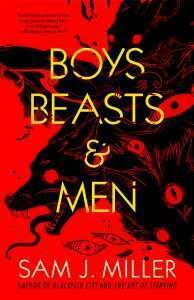 Collections of short fiction can often divide opinion and can feel patched together when strung as one along a loose theme. Boys, Beasts, & Men has the feel of a carefully crafted, coherent piece. It didn’t read at all like an-anthology-for-the-sake-of-an-anthology. This is mostly down to the fact that Miller’s sheer talent shines through in abundance. The harmony is also helped by the short scenes-between-the-scenes which are interspersed amongst the stories and depict a spontaneous sexual encounter. I grew to think of these as the titular narrative, one which oozes pure carnal lust: “Flesh mingles, merges. Boy, beast, man: we are one thing.”
Collections of short fiction can often divide opinion and can feel patched together when strung as one along a loose theme. Boys, Beasts, & Men has the feel of a carefully crafted, coherent piece. It didn’t read at all like an-anthology-for-the-sake-of-an-anthology. This is mostly down to the fact that Miller’s sheer talent shines through in abundance. The harmony is also helped by the short scenes-between-the-scenes which are interspersed amongst the stories and depict a spontaneous sexual encounter. I grew to think of these as the titular narrative, one which oozes pure carnal lust: “Flesh mingles, merges. Boy, beast, man: we are one thing.”
This synergy is also bolstered by the fact that Miller has said that much of his fiction takes place in a shared universe. ‘Calved’ is a moving tale of an immigrant father desperate to stop the adoration of his teenage son slipping through his fingers. The setting is the intriguing melting pot of Qaanaaq which will be familiar territory to anyone who loved Blackfish City. Equally heart-wrenching is ‘Conspicuous Plumage,’ the story of a grieving brother who taps into the supernaturally gifted Hiram as he embarks on a quest for answers to a tragedy which still tears at the fabric of his family life.
Yet the true quality of Boys, Beasts, & Men (indeed of Miller’s work as a whole) is in its variety and originality. ‘Allosaurus Burgers’ is a worthy opener. It sets the tones which will reverberate throughout the book and introduces some of its core themes – it is an anthem on parental relationships. This is a writer who refuses to be pigeonholed, an artist who can seamlessly explore the interplay between scientific possibilities, homosexuality, class, and familial tension. The stories speak via their own quality and give voice to a range of remarkable characters and varied cultural references. I particularly enjoyed the use of Kong in ‘Shattered Sidewalks of the Human Heart’.
I also found that little hidden gems of Boys, Beasts, & Men stayed with me whilst I had this book in progress. Ideas, characters, and moments squatted in my head making me ponder and chuckle as I got on with mundane everyday life. ‘We Are the Cloud’ was definitely a classic case of an idea that I wish I had myself. This tale stood out in its originality. It is set in an age where the downtrodden lower classes get by through selling their headspace as computing power via the dangerous business of cloudporting. Yet the piece develops into a telling exploration of issues such as gender, sexuality, and race whilst also being a moving love story.
Boys, Beasts, & Men is an outrageous journey which skilfully blends genres and will haunt you with its original, poetic voices as much as its victims, villains, and treasure trove of leading actors. My personal favourites would have to be, firstly, the redolent supernatural love story ‘Ghosts of Home.’ This encapsulates the sheer inventiveness of Miller’s writing and his use of glorious surreal moments. I think that I will always keep hold of the glorious notion that we can pacify spectres with oranges as gifts! My other takeaway will be ’57 Reasons for the Slate Quarry Suicides’ as a masterclass in original, innovative style which will leave you smiling as yet another well-crafted protagonist fights their way towards supernatural vengeance.
Read Boys, Beasts, & Men by Sam J. Miller
The post REVIEW: Boys, Beasts, & Men by Sam J. Miller appeared first on Grimdark Magazine.
October 15, 2021
REVIEW: A Deadly Education by Naomi Novik
A Deadly Education by Naomi Novik, lesson one: block off a large block of time when starting this series because you will not want to put it down. Damn, getting sleep and bathing. Hell, even food is optional. This book is so excellent it will grasp you around the neck and hold you tight.
“READER, I RAN the fuck away.”
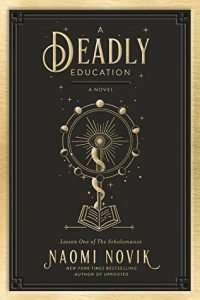 First off, let me set the scene. The first book of the trilogy, A Deadly Education, introduces us to our protagonist Galadriel and the school called Scholomance. Galadriel’s character reminds me of if I took Harry Potter and made the exact opposite of him in every way.
First off, let me set the scene. The first book of the trilogy, A Deadly Education, introduces us to our protagonist Galadriel and the school called Scholomance. Galadriel’s character reminds me of if I took Harry Potter and made the exact opposite of him in every way.
If I constantly put him in dangerous situations, and Hogwarts was continually trying to feed him to fluffy the three-headed dog, it would be Galadriel. The only similarity between them is at both of their cores; they have good hearts. But in Galadriel’s case, her heart is slightly darker and has terrifying magic and great snark armor.
Scholomance is the wizarding school that Galadriel goes to. The survival rate for Scholomance is around 50%. You do not fail out; you are blown to bits, eaten, have your skin flayed off in strips, or suffer irreparable psychological damage. To graduate, you must run the gauntlet through an obstacle course of creatures from hell all bent on devouring your mind, body, and soul. Surviving Scholomance is just as much about luck and social station as it is a skill.
“I love having existential crises at bedtime, it’s so restful.”
Imagine being a kid; maybe you are a bit shy or gawky. Perhaps you come from humble beginnings. Now imagine that your ability to survive Scholomance is almost certainly on your family’s wealth or your power to be a suck-up. If you aren’t good enough at it, you will probably get eaten by the demons that roam the sacred halls. In Galadriel’s case, everyone hates her or is unnerved by her. They know something is off, dark queen vibes. What they don’t know is that Galadriel has an immense amount of power. The kind that flattens cities and makes people slaves. Except that all she wants to be is left alone and not hurt anyone. How does she survive her junior year without hurting anyone and not being eaten alive by the evils that roam the halls?
It has been a long time since I read something as engaging as this story. I adored El, her snark, and her heart. She wants people to leave her alone, and short of yelling at them to “get off my lawn,” people won’t leave her be. And things keep getting more complicated. There is a boy who is a confusion to her. People start gravitating towards her and maybe want to be friends. What is this friend nonsense?
Novik did an excellent job in crafting the characters and the school. You want to know them; there is enough teenageness to believe they are young adults grappling with hormones and who they are. But enough realism that they understand that the school and the demon-like creatures will eat them.
Pick up this book and get sucked in.
Read A Deadly Education by Naomi Novik
The post REVIEW: A Deadly Education by Naomi Novik appeared first on Grimdark Magazine.
October 14, 2021
REVIEW: Castlevania S2
Following up the brief but brilliant first season, Castlevania S2 builds on the excellent foundation and brings an exciting, well-made adult anime to our screens for fans of the game and newbies alike. It takes what made the first season a surprise hit and expands on it with new and exciting characters that further develop the world based on the popular platforming game.
Dracula prepares his forces to annihilate the world of men for their past actions and so Trevor Belmont, Sypha Belnades, and Alucard join forces as humanity’s only hope at stopping the seemingly invincible Count. Castlevania S2 is given eight episodes this time around and the extra time allows the writers to explore the stunning world that has been created whilst adding some big players to the mix. Forgemasters Isaac and Hector are capable of using the dead to create dreaded night monsters, and the elegant but vile Carmilla threatens to steal every scene she is in, hinting at darker and bigger threats than the weary Dracula himself. The themes of grief and trauma run through this season as characters such as Hector and Isaac are given reasons for their willingness to side with the vengeful Dracula and seek the destruction of humanity. Taking the time to give reasons for villainous actions has been a strong point in the show so far and Castlevania S2 continues this with skill and quality. You may hate some of the characters but you can never claim that they are behaving without reason.
Castlevania S2 can be a bit slow at times as the extra few episodes allow for too much exposition and an emotional Dracula who doesn’t seem to be doing much other than sulking in his room like an overly powerful teenager. Pacing issues aside, when the action hits, it hits hard. Limbs and heads fly through the air in a beautiful dance of death as the final third of the season picks things up. The violence is stunning as the battles come thick and fast and it is a joy to behold some of the most disgustingly brutal deaths I’ve seen animated on TV. The main trio of Belmont, Sypha, and Alucard anchor the show and the bickering and banter between the two men provides some of the comedic relief from the blood and gore. Sypha is always a joy as she balances out the mopey and sometimes petulant men.
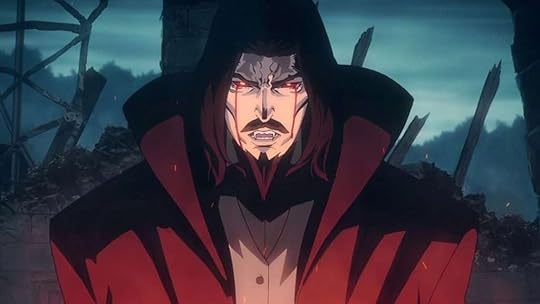
The slow burn of Castlevania S2 brings a short break from the fast-paced hyperviolent first season. It has a more melancholic mood and atmosphere this season as the pieces are all moved into place for the grand finale. For the most part, the action takes a backseat as we get to know the characters and watch as their bickering grows into a friendship and trust. It’s interesting to watch and see develop though some fans of the first season’s breakneck pace may feel differently. The apathy of Dracula as a result of his grief slows down the story but gives the audience time to evaluate the relationships he has with those around him and this adds more weight to proceedings when the eventual bloodbath begins.
Castlevania S2 ramps up the violence but builds on the excellent character work started in the first season. Excellent animation, high-quality voice acting, interesting characters, and a brilliant ending that will leave you salivating like a night monster as you wait for the next season, Castlevania S2 is possibly the best video game adaptation in history. With season 3 and 4 ready on Netflix, the best is yet to come…
The post REVIEW: Castlevania S2 appeared first on Grimdark Magazine.
September 29, 2021
REVIEW: Squid Game
In Squid Game, the latest piece of brilliant South-East Asian games-based deadly horror TV translated to English by Netflix, a group of people up to their eyeballs in debt join a deadly game to win riches. They just have to survive six childhood Korean games, and they are deadly and bloody as all hell.
Seong Gi-hun and Cho Sang-woo are childhood friends. They would play the squid Game, a mixture of physical handicap, physical prowess, and team sport. Both seemingly at opposite ends of South Korea’s socio economic scale with Seong Gi-hun a destitute ex-factory worker with a gambling addiction stealing money from his elderly mother, and Cho Sang-Woo a high flying securities investor travelling the world, it is a surprise to one but not the other that they both end up in such horrors.
With our two key protagonists, four hundred and fifty six debt-strangled players are brought into the game. There are gangsters, math teachers, married couples; people from all walks of South Korean life. The games are simple and straight forward, and it’s a black and white, win or be eliminated situation. Once they start to understand what being “eliminated” means, however, terror begins to take hold.
The story between Seong Gi-hun and Cho Sang-woo is really well done. As is the growth of the surrounding cast as they build up and are then torn down. A favourite character of mine was Kang Sae-byeok, a North Korean defector trying to buy the safety of her family. In Australia, we rarely get much of a nuanced view into the differences of the north and south–it’s pretty much just articles about the hermit nation’s media’s big dick swinging, the population’s impoverished existence to pay for that big dick, and memes about the country’s dictator–so even just seeing a North Korean character through a South Korean cast’s eyes was interesting for me.
As with a lot of SFF/ horror from South East Asia, the scenery is chewed to absolute hell, at times it’s ridiculous as balls, there are plot holes the Wallabies forward pack could power through, and there are plenty of jaw-on-the-floor moments that I absolutely loved. Just pure, magnificent, gory fun.
The South East Asian nations continue to pump out amazing television and film (eg. Alice in Borderland), and Netflix keeps translating them and giving us all access to them. South East Asia is probably one of the most diverse regions on the planets, and I am getting more and more into their crazy style of storytelling.
You can check out Squid Game on Netflix.
The post REVIEW: Squid Game appeared first on Grimdark Magazine.
September 28, 2021
REVIEW: The Splinter King by Mike Brooks
The Splinter King (book two in the God-king Chronicles) continues in the vein of The Black Coast, with a complicated, well-thought-out storyline placed in an astonishingly detailed world. Mike Brooks writes with a confidence that is backed up with skill. As with The Black Coast, The Splinter King utilizes multiple points of view to tell a rich story, twisting different plot threads together in unexpected ways.
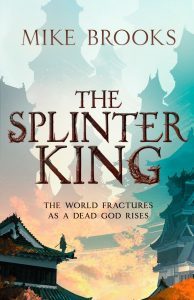 Where book one felt very much like setup, and at times seemed a bit confusing, The Splinter King sees things starting to pay off. The stakes seem higher-or maybe I’ve just become that much more invested in the fates of everyone. While still on the larger side, it seemed to move more quickly than The Black Coast, quite probably because the world is now established, and the rules have been explained. The speech patterns, which threw me a bit in The Black Coast, now made much more sense.
Where book one felt very much like setup, and at times seemed a bit confusing, The Splinter King sees things starting to pay off. The stakes seem higher-or maybe I’ve just become that much more invested in the fates of everyone. While still on the larger side, it seemed to move more quickly than The Black Coast, quite probably because the world is now established, and the rules have been explained. The speech patterns, which threw me a bit in The Black Coast, now made much more sense.
The intrigue was a stroke of genius. I enjoy books with crooked characters, ingenious plots, and the occasional backstabbing, and The Splinter King has all of it in spades. Add in dragons (although they are distinctly dinosaur-esque), and it’s safe to say that I was more than satisfied.
Author Mike Brooks chose to focus more on different characters in this continuation; however, the characters from The Black Coast were still present. They just stepped out of the limelight enough to allow other characters to become more developed. The Splinter King was told from multiple points of view, but each character had their own perspective and their own narrative voice. It becomes almost a puzzle: if you put together the separate points of view, it forms a more complete picture of the world and what is happening in it.
The book did have its moments where I felt that not much was going on, and sometimes it seemed to forget what it was doing and sort of meander a little. It wasn’t enough to ruin my enjoyment, but it was definitely noticeable. On the other hand, usually the meandering was accompanied by another look at what is an incredibly nuanced world. The world itself is by far my favorite part of the series. It is so well thought out, unique, and diverse. There are no shortcuts when it comes to worldbuilding, and it shows.
The Splinter King continued the story started in book one extremely well. We have moved past the setup of The Black Coast into the meat of the story and it’s quite the story! I have no idea how everything will be wrapped up, but based on how things have progressed, the next book will be quite the ride.
Read The Splinter King by Mike Brooks
The post REVIEW: The Splinter King by Mike Brooks appeared first on Grimdark Magazine.
September 27, 2021
REVIEW: Horseman by Christina Henry
Christina Henry boasts a back catalogue which cements her reputation as the queen of reimagination. As well as a host of original works, she has previously lent her innovative authorial style to give fresh voices to Captain Hook and Red Riding Hood. She has even lent Lewis Carrol’s Alice a psychotic, gritty post-apocalyptic new lease of life. And so, to this month’s release of Horseman which, as the subtitle reveals, is A Tale of Sleepy Hollow. Although this could be seen more as a sequel, Henry polishes the story elements drawn from the source material until they shine. Here, she has crafted an accomplished, modern spine chiller.
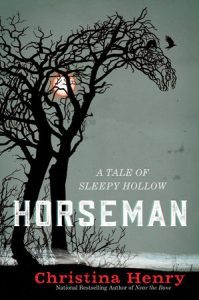 Horseman inverts the original work by making Brom Bones (a stock, love rival to Ichabod in Washington Irving’s classic short story) a local legend twenty-four years after the titular rider first haunted the village. The protagonist is Bones’ fourteen-year-old granddaughter Ben van Brunt; a beautifully rounded character through whom Henry explores both contemporary and modern-day attitudes towards gender.
Horseman inverts the original work by making Brom Bones (a stock, love rival to Ichabod in Washington Irving’s classic short story) a local legend twenty-four years after the titular rider first haunted the village. The protagonist is Bones’ fourteen-year-old granddaughter Ben van Brunt; a beautifully rounded character through whom Henry explores both contemporary and modern-day attitudes towards gender.
The opening quickly establishes an air of mystery. Whilst in the woods playing Sleepy Hollow Boys, Ben and her only friend Sander are caught up in the aftermath of a grisly murder. After seeing a classmate dismembered, Ben is soon led down a path which will see her question the narrative that she has been spun throughout her life around how her parents came to die.
Much like the original tale (and Tim Burton’s most notable adaptation), Horseman makes use of the woods as a living, breathing entity rather than merely a backdrop. Enchantment and the supernatural are woven into the villagers’ lives. Henry’s prose cleverly plays on the ambiguities at play as events unfold and once seemingly respectful figures around her begin to reveal their true temperaments. Are they driven by an ancient, malignant force which resides deep in the woods’ forbidden heart? Or are they led by far more recognisable human urges which exist far beyond the banks of The Hudson?
As the locals’ behaviours become more and more inexplicable, the body count grows. Tensions rise. We are told from the beginning that “Everyone in Sleepy Hollow knows about the Horseman, but no one really believes in him.” Yet as Ben embarks on her voyage of discovery, the sound of his hoof fall becomes too loud for her to ignore. This story drew me in and didn’t let me go. I found myself invested in both the heroine and the story and longed to find out whether the rider would prove to be a friend or foe as Ben seeks to stop the demonic entity which haunts her ancestral home.
When the classic rivalry between Brom Bones and Ichabod Crane is brought to a fresh and innovative climax, Ben knows that she must act. But first she must re-evaluate her relationship with her grandmother Katrina. Will the forces at play (and the attitudes of 19th Century New York State) allow her to become the man of the house that she craves to be?
Horseman is a beautifully made dark read and a tale as much about growth and identity as much as it is family, loss and grief. This is a short, sharp page turner worthy of a one-sitting-read. I loved it and you will too if you’re a fan of eerie, gothic tales or chilling modern horror.
Read Horseman by Christina Henry
The post REVIEW: Horseman by Christina Henry appeared first on Grimdark Magazine.
REVIEW: Angels of Death: Tempest
In Tempest, the fifth episode of the barnstorming debut series from WarhammerTV, Angels of Death, we flash back to an epilogue to the current story. The Tyranid hive fleet has arrived and a void battle between the full Blood Angels fleet (including the Sword of Baal from the main story), escalates in earnest. The steel and faith and human flesh of mankind take on the sheer weight of numbers and psychic might of the Tyranids, and our bloody heroes are in serious trouble.
Straight off the bat, I either missed the cue that notified the viewer that Tempest was a flashback right at the start, or the Warhammer TV team really gave me more credit than I deserve as a viewer. I originally thought we were in the void over the planet we’ve been fighting over for the last four episodes. However, after a few minutes of space battle (with pretty horrible sound effects selection, I have to say) and some characters showing up who were already planetside, I realised we were in a flashback. Tempest is actually the story of how the Sword of Baal ended up in orbit over a Tyranid infested planet with Captain Orpheo taking a thunderhawk gunship to the surface to investigate the war on the planet’s surface.
The episode overall is a bit of a weird one. On the one hand, it was awesome to watch, full of fire and fury, of bold declarations and desperate decisions—everything we’ve grown to love about the Warhammer 40k universe. On the other hand, from a story perspective, it was absolutely pointless. There were no major twists or turns to add to the current storyline, no penny drops or anything to put my jaw on the floor to make the 28 minute episode genuinely worth it from a story perspective. If anything, they should have just made this episode 1 and gone with a linear storyline.
No matter how fun Tempest was from the perspective of a stand alone product, I’m really hoping the creators put as much time and effort into progressing the storyline next episode as they did with this superfluous one. Get me back to the Blood Angels on the ground battling the Tyranid menace while searching for Captain Orpheo already, please!
Check out the rest of our episode reviews here.
Watch Angels of Death: Tempest on Warhammer TVThe post REVIEW: Angels of Death: Tempest appeared first on Grimdark Magazine.
September 26, 2021
REVIEW: Resident Evil VII
Resident Evil VII or Resident Evil: Village is a direct sequel to Resident Evil VII: Biohazard that managed to upend the formula of the franchise in a way similar to Resident Evil IV. It is a Gothic horror influenced story that has a lot of similarity to Resident Evil IV‘s aethstetics while keeping its overall survival horror tone.
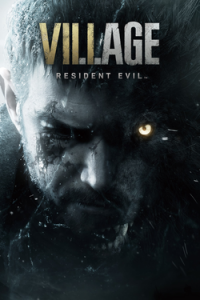 Part of what had been driving the franchise down was the attempt to make it in a balls-to-the-wall action series that removed all of its horror fiction roots. Basically, take Resident Evil IV‘s focus on cheesy B-movie action and dial it up to the eleven. Unfortunately, that led to removing the horror element that was so key to the series success and resulting in the underwelming Resident Evil VI. Resident Evil VII brought back the survival to survival horror and made it a story about a man, Ethan Winters, creeping around a haunted Louisiana mansion in search of his missing wife.
Part of what had been driving the franchise down was the attempt to make it in a balls-to-the-wall action series that removed all of its horror fiction roots. Basically, take Resident Evil IV‘s focus on cheesy B-movie action and dial it up to the eleven. Unfortunately, that led to removing the horror element that was so key to the series success and resulting in the underwelming Resident Evil VI. Resident Evil VII brought back the survival to survival horror and made it a story about a man, Ethan Winters, creeping around a haunted Louisiana mansion in search of his missing wife.
In Resident Evil: Village, you are still Ethan and your wife is seemingly murdered by longtime protagonist Chris Redfield. Worse, your newborn baby is kidnapped by Chris and you end up in a rural Eastern European village ruled by supernatural-seeming monsters. Ethan, having gone through all this crap before, sets out on a mission to get his daughter back by any means necessary. This will take him up against lycans, vampires, a hallucinatory doll house, and the evil witch at the center of it all.
After the excellent and okay remake of Resident Evil II and Resident Evil III based on Resident Evil VII‘s engines, this game slides a bit more toward action than stealth. That doesn’t mean it lowers the horror element, though. Instead, this game invokes a lot of classical horror and Universal Monster tropes in a way similar to the original game or Resident Evil IV. Vampires and werewolves are things that we haven’t seen before in the franchise but are appropriately brought to life here in all their terrifying glory.
The pacing of the game suffers a bit due to the fact that the most interesting and entertaining of the bosses, Lady Dimitrescu, is the first one to be defeated. Sadly, unlike Jack Baker, she doesn’t make any subsequent appearances in the game. The other bosses are fine but I feel like the game’s marketing knew that its vampire boss was the best of them and I was reminded a bit of Jeanette Voorman from Vampire: The Masquerade: Bloodlines. She, too, was everywhere in marketing but only a minor character.
The game still plays like an action horror game but the action is a bit more accented from previous installments to mixed results. By the time Ethan’s story comes to a close, he will eliminated hundreds of monsters. He has also gained the power to sprint and parry enemies. This is meant to show how he’s gained in experience since his first encounter with BOWs but does add to a sense of him being a different character. There’s also plentiful ammunition and this undercuts the tension and foreboding that was a major part of what I liked about Resident Evil VII and the Resident Evil II remake.
This isn’t to say that the game is all action all the time, though, and some of the levels are definitely nightmare fuel. I particularly liked a section of the game that seems to be an homage to Clocktower with its giant mutant baby chasing you. That thing will keep you up at night if you don’t stay ahead of it. The game also has the keys and puzzles necessary to make a proper Resident Evil game. My opinion is that while I may prefer Resident Evil VII more, I think this is leagues better than Resident Evil VI and better than Resident Evil III‘s remake.
In conclusion, Resident Evil VII is an excellent game and if not the perfect sequel then one of the better entries in the long-running franchise. Ethan is a tremendous protagonist and I wish he would show up in future games despite this story wrapping up a lot of his plots. He has an everyman energy lacking from Chris Redfield and Leon Kennedy. I also feel like this is better than a remake of RE IV but covers a lot of the same ground.
Play Resident Evil VII
The post REVIEW: Resident Evil VII appeared first on Grimdark Magazine.
September 25, 2021
REVIEW: A Terrible Fall of Angels by Laurell K. Hamilton
I know that Laurell K. Hamilton is probably not the first name to pop in to one’s mind when grimdark is mentioned. I have been a reader of her books for about two decades, so I can say with confidence that this latest offering, A Terrible Fall of Angels, is more similar to her earlier supernatural detective fiction than her other recent offerings and although I don’t mind the smuttiness of her later works there is none of it to be found here. I would not put it on the grimdark shelf in my book case, but it belongs grimdark adjacent. I really wanted to like this novel and I was hoping for a return to her earlier gritty style but unfortunately Hamilton missed this mark here.
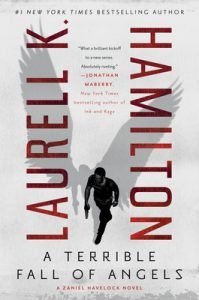 A Terrible Fall of Angels is the first of a series set in a new world from Hamilton and was written in response to the requests from her readers to distract from the global pandemic. Hamilton has said in interviews that the first line of the novel ‘there were angel feathers in the dead woman’s bed’ had been unchanged on a post-it note on her wall for a decade. It is somewhat disappointing that it seems this novel has been rushed out, given that it had been brewing for so long. There are some annoying inconsistencies and unnecessary repetitions that I think would have been resolved if it had had some more time taken with it. This is an alternative universe fantasy, set in a recognisable modern world, with many grimdark features we can enjoy: the lead character is flawed, it is dark, violent, and deals with the blackest aspects of both the natural and supernatural.
A Terrible Fall of Angels is the first of a series set in a new world from Hamilton and was written in response to the requests from her readers to distract from the global pandemic. Hamilton has said in interviews that the first line of the novel ‘there were angel feathers in the dead woman’s bed’ had been unchanged on a post-it note on her wall for a decade. It is somewhat disappointing that it seems this novel has been rushed out, given that it had been brewing for so long. There are some annoying inconsistencies and unnecessary repetitions that I think would have been resolved if it had had some more time taken with it. This is an alternative universe fantasy, set in a recognisable modern world, with many grimdark features we can enjoy: the lead character is flawed, it is dark, violent, and deals with the blackest aspects of both the natural and supernatural.
This is the first time Hamilton writes from a male perspective, with our protagonist being the detective Zaniel ‘Havoc’ Havelock. Havoc is the angel expert on the Metaphysical Coordination Unit in the Los Angeles Police Department. He is also an Angel Speaker so he can communicate with angels directly. However the angels in this world are not the cute, cuddly, cherubs we have been conditioned to expect. They are awesome and terrifying with blinding fire and divine powers. In this world angels and demons are real and they have entered in to a treaty which prohibits a celestial war and limits the numbers of beings that may be sent down, or up, to earth. Demons being allowed to prowl the world neatly explains why there needs to be metaphysical law enforcement.
Havoc is meant to be a relatable main character. He is in his thirties, an army veteran, his second marriage is falling apart around him, he had a difficult childhood and as the novel progresses is forced to deal with his own personal demons and troubled past. Havoc is not a morally ambiguous anti-hero that we love to hate but he also is not a knight in shining armour swooping in with unnatural touched by God skills always able to save the day. I really wanted to feel for him, but I just did not. As the novel went on I felt less sorry for him and was more frustrated by his whinging and how easily distracted he was by the body of any female character.
This is a fast paced novel from Hamilton and as A Terrible Fall of Angels has very short chapters, some only a couple of pages long, it can be read at speed. It was easy to pick it up, and put it back down, and read in short bursts when I didn’t have a large amount of dedicated reading time. It has a similar feel to other supernatural detective novels, such as Jim Butcher’s Dresden Files or Ben Aaronovitch’s Rivers of London but with a very modern American spin to it particularly with the police procedural elements and in the intense action scenes which invariably involve fire arms as well as magical violence. A Terrible Fall of Angels is clearly well researched and is a believable urban fantasy with an absence of dense world building. However because so much research has been done and that information is then largely passed on to us through character conversation it seems like a lecture. Although I would accept that this may have been to form a foundation to the series, I would hope isn’t relied on as much if there are subsequent novels. A Terrible Fall of Angels has all the ingredients of a good dark urban fantasy but unfortunately it is not a novel I enjoyed. I would read a second novel if there was one out of curiosity but it would not jump to the top of my reading list.
Read Terrible Fall of Angels by Laurell K. Hamilton
The post REVIEW: A Terrible Fall of Angels by Laurell K. Hamilton appeared first on Grimdark Magazine.




